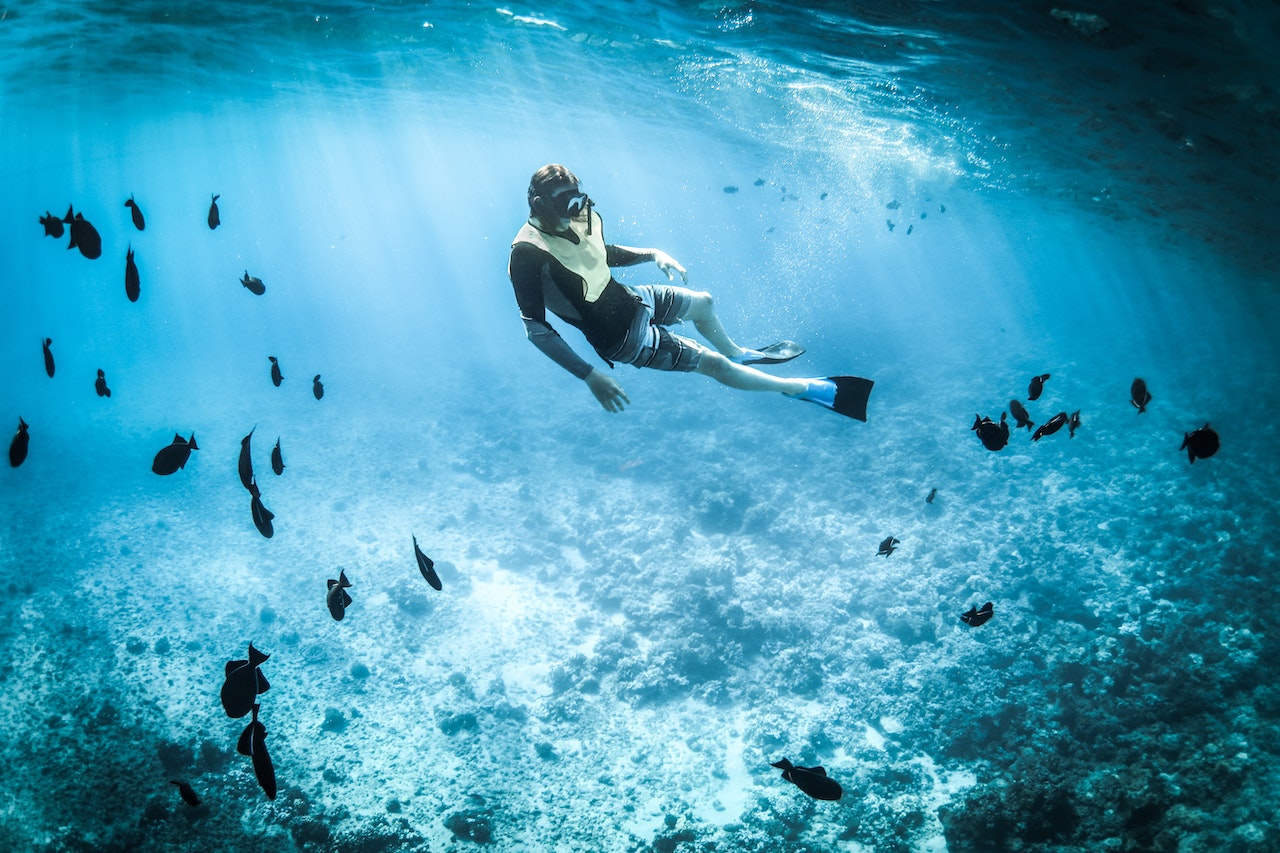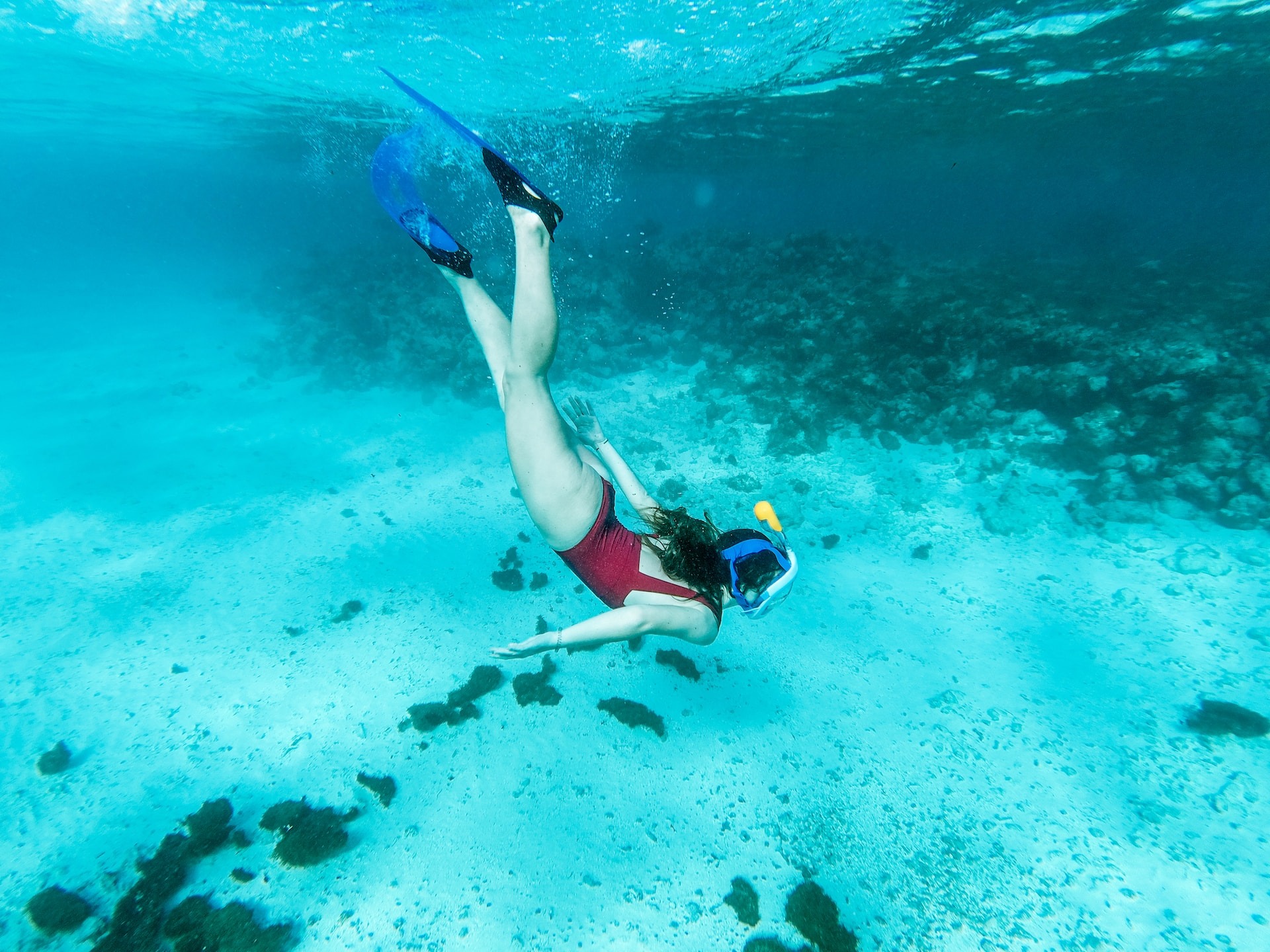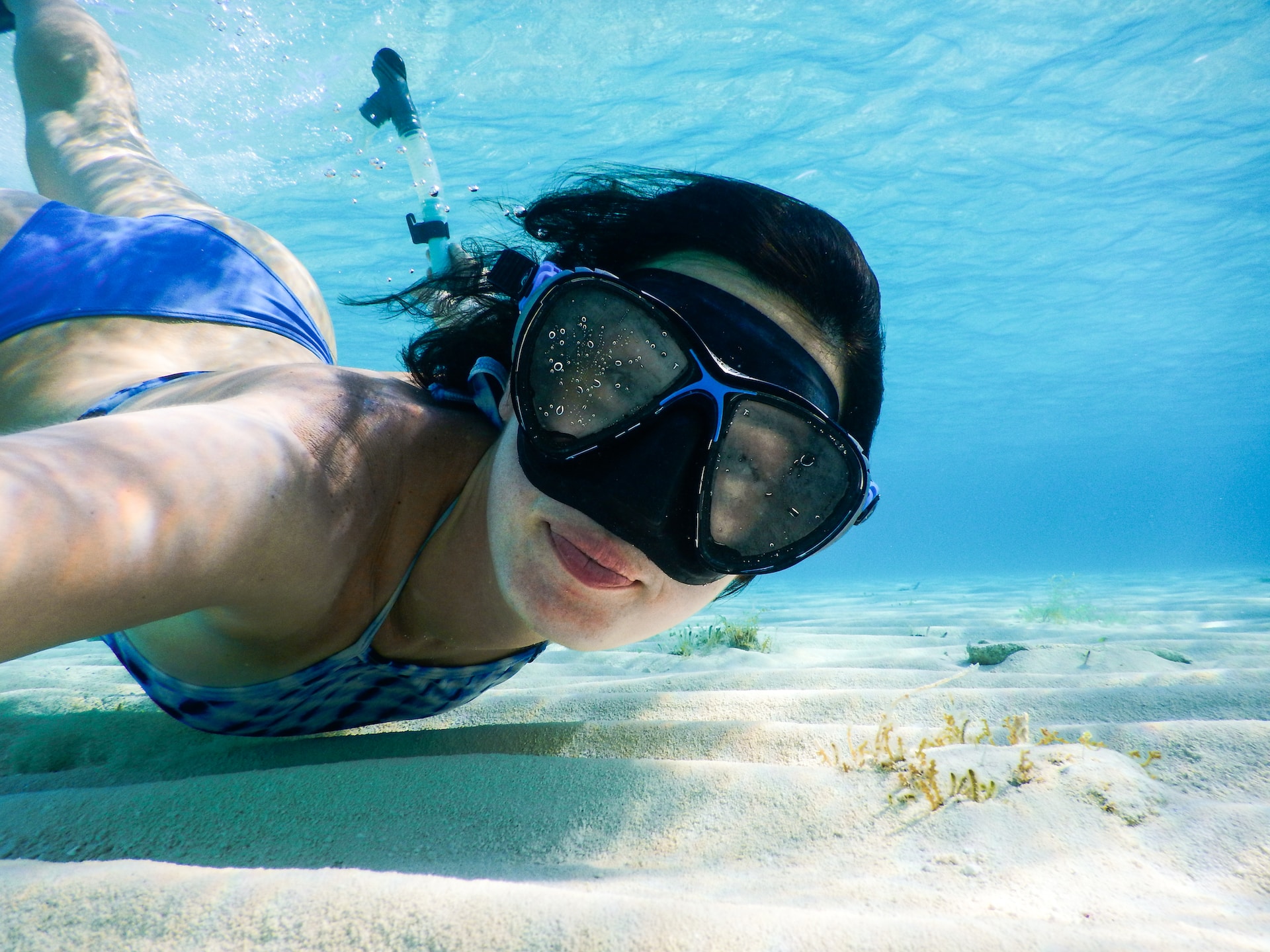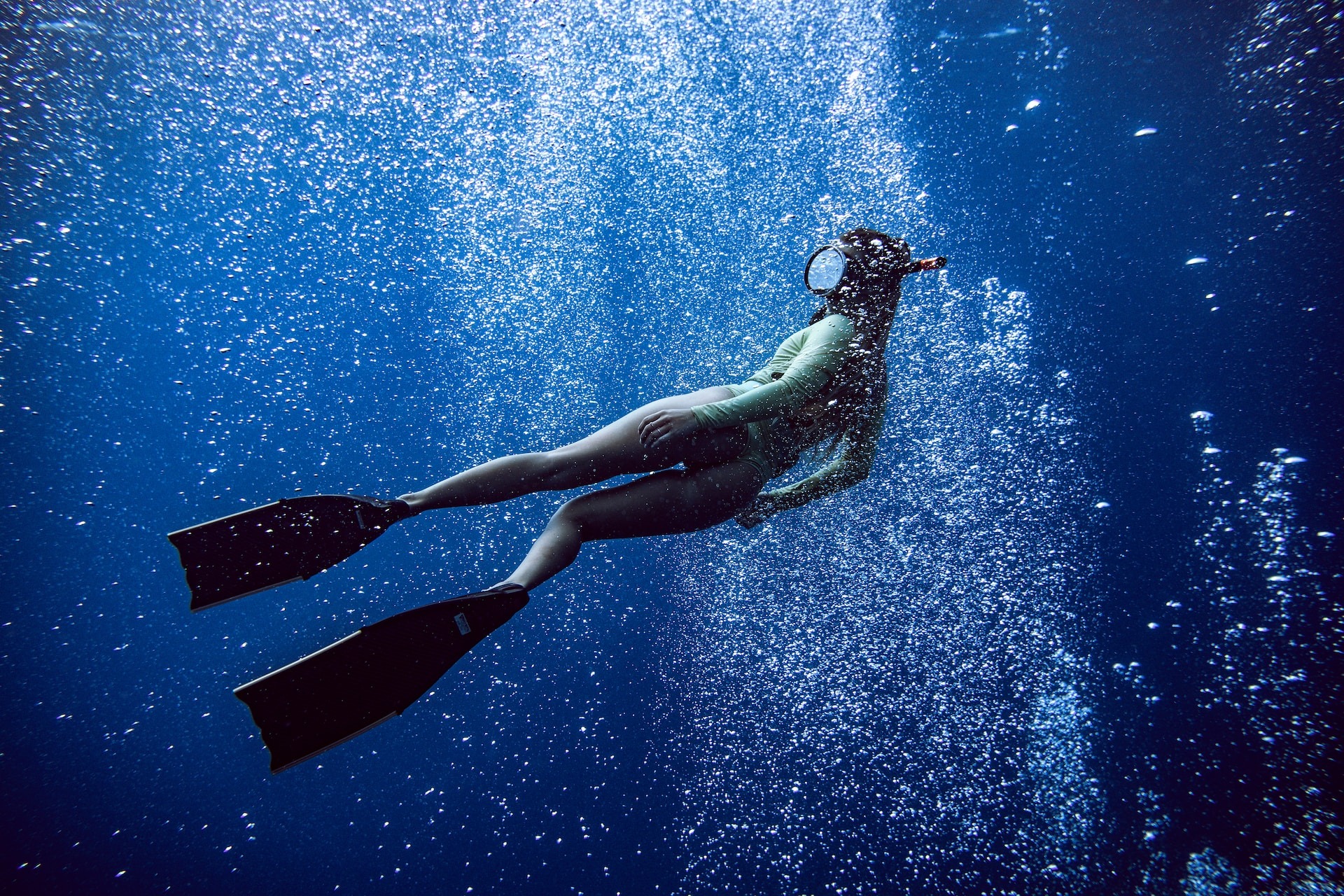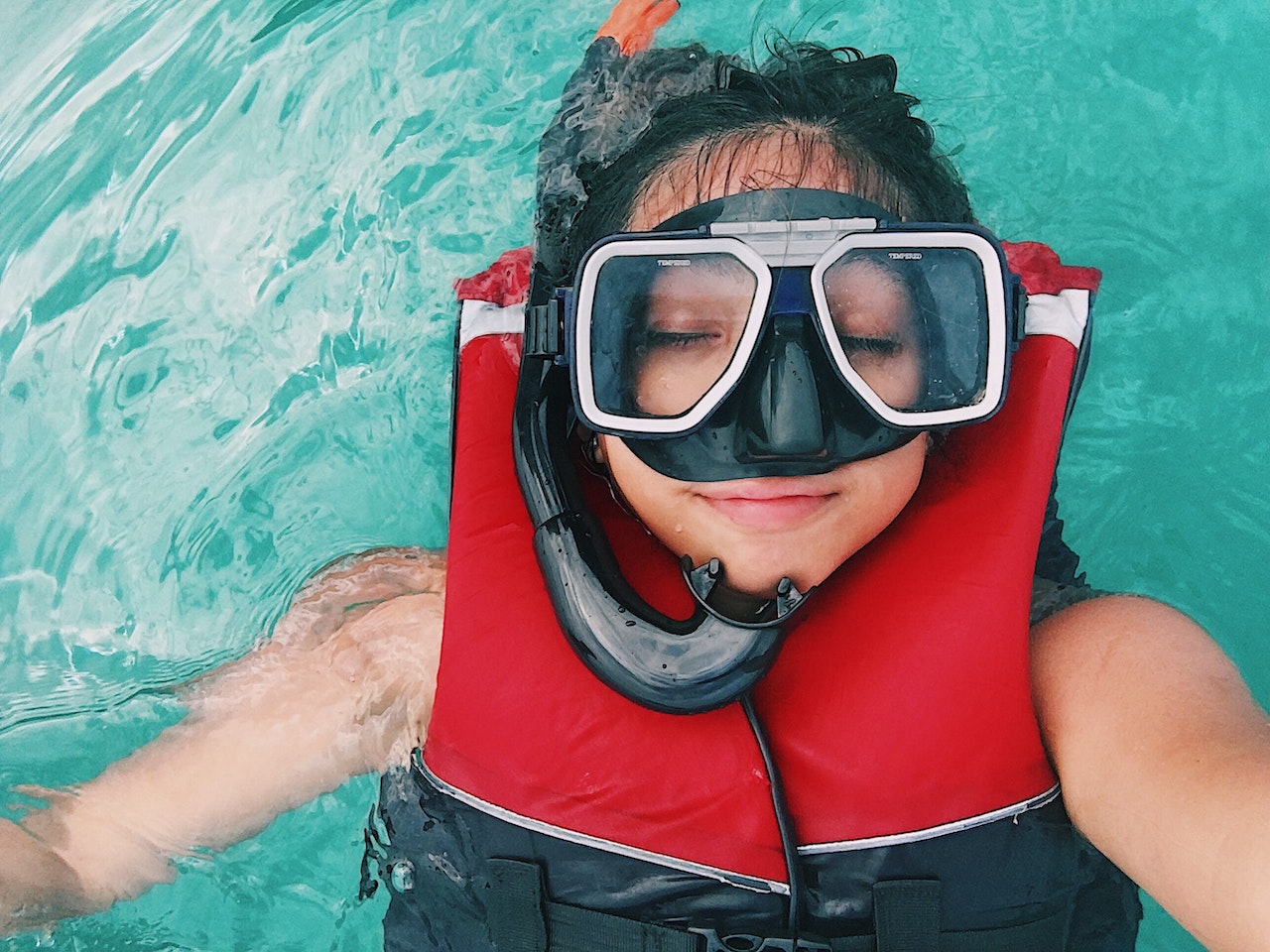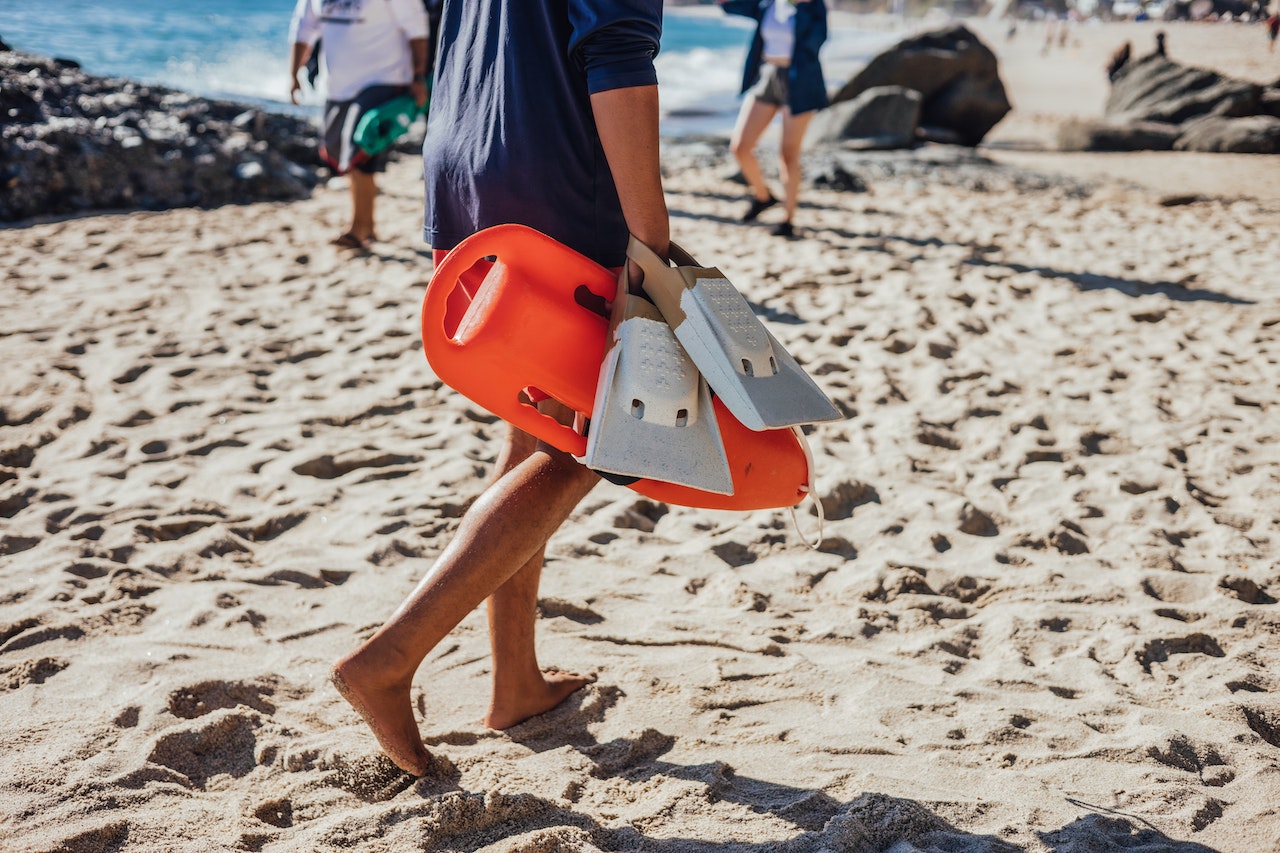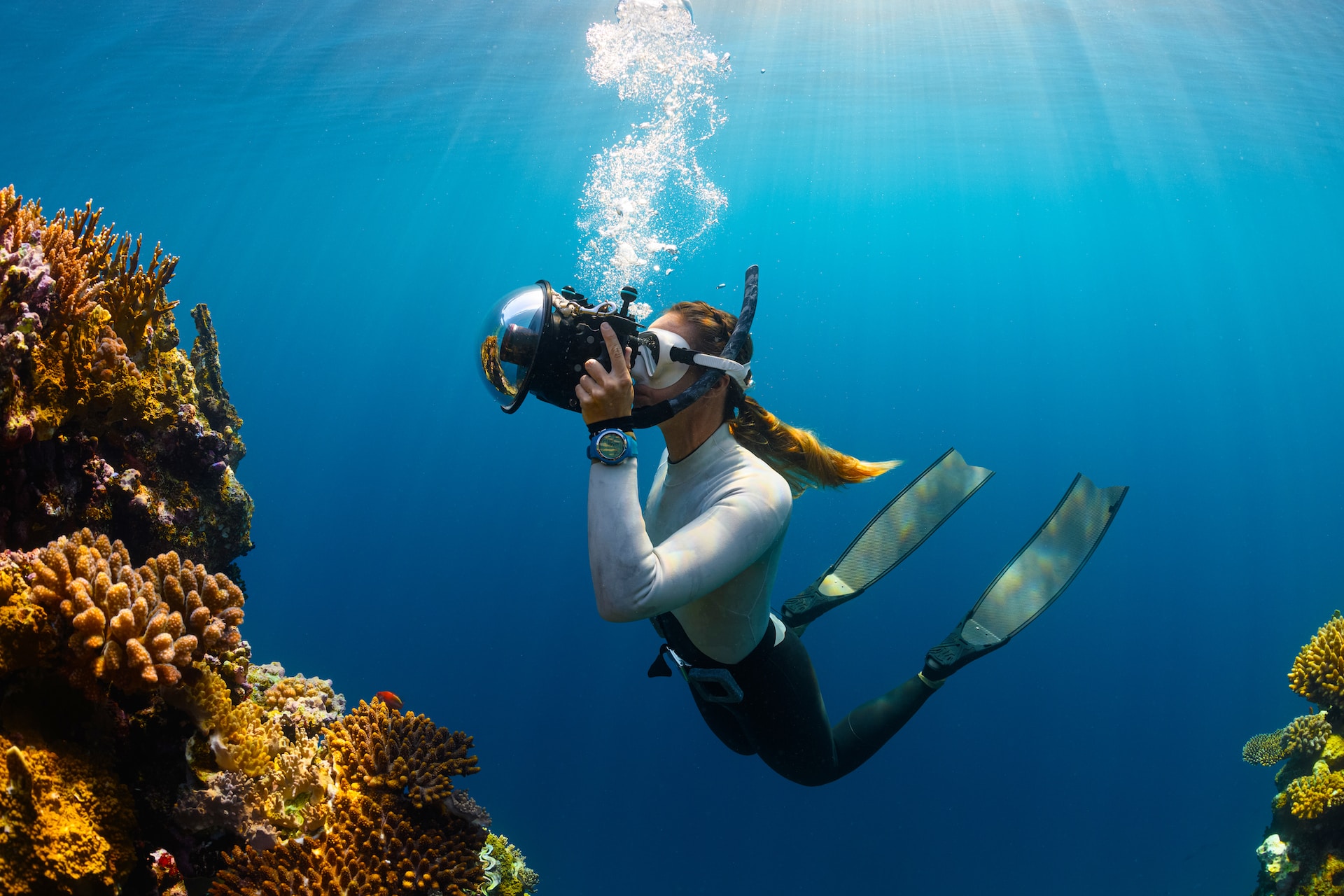Snorkeling offers daring explorers the chance to connect intimately with nature, immersing themselves in the mystical marvels of the ocean. It provides a firsthand encounter with the enchanting underwater world. Frequently, snorkeling serves as an initial glimpse into the realm beneath the waves, where individuals cultivate an appreciation for life beneath the sea’s surface and harmonize with its rhythms.
Destinations such as the Caribbean are renowned for offering captivating underwater experiences that blend awe-inspiring and awe-inducing elements. In this region, pursuits like scuba diving and snorkeling present optimal avenues for exploration. Often regarded as the more accessible of the two, snorkeling becomes the activity of choice for many beachgoers seeking simplicity and engagement during their vacation. Moreover, with this article, we will dive into more things you should know about this mesmerizing activity!
What Is Snorkeling?
Snorkeling is defined in the dictionary as the act of swimming in or through a body of water while utilizing specialized gear such as a diving mask, a specially designed breathing tube known as a snorkel, and typically swim fins. When you use snorkeling equipment, you can swim while keeping your face and body submerged beneath the water’s surface while maintaining the ability to breathe. It’s important to note that, unlike scuba diving, snorkeling keeps you restricted to the water’s top layer to prevent water from entering your snorkel (the breathing tube).
Selecting Snorkeling Gear: Necessities and Non-Essentials
Embarking on an exceptional snorkeling journey requires mental readiness and the assurance of having the necessary gear. While personal items can enhance your experience, they might also become cumbersome. Remember, limit your items to essentials, as valuables could be lost or stolen. Below is a rundown of the equipment and terms you should acquaint yourself with prior to your adventure:
Wetsuit or Dive Skin – Perfect for maintaining warmth and enhancing protection, particularly in chillier waters. They offer a range of sizes, from shorties to full-length options. Additionally, a wetsuit or dive skin is a versatile piece of gear that serves a dual purpose when engaging in aquatic activities, particularly in environments with lower temperatures. Designed to provide both warmth and protection, these suits come in various sizes to cater to individual preferences and requirements.
Diving Mask / Goggles – This safeguard your vision from water intrusion and enable spectacular wildlife observation beneath the waves. The diving mask or goggles stand as a fundamental piece of equipment essential for an enriching underwater experience. While they might necessitate a brief period of acclimatization, their significance cannot be overstated. These specialized masks designed for snorkeling and diving play a pivotal role in preserving your eyesight and facilitating an up-close encounter with the captivating marine life thriving beneath the ocean’s surface.
Flotation Device – A flotation device is crucial in bolstering safety during aquatic endeavors, making it an indispensable addition to your snorkeling gear. Specifically, an inflatable snorkeling vest stands out as a top recommendation due to its ability to provide a reliable buoyant force when needed. Ensuring that you possess a vest that can be effortlessly inflated and deflated is of paramount importance, as it directly impacts your comfort and maneuverability in the water. Moreover, the primary purpose of this device is to grant you buoyancy in the water, thereby reducing the effort required to stay afloat.
Swim Fins – These tools significantly augment your underwater experience. Their benefits extend beyond mere propulsion, encompassing energy efficiency and adaptability to varying aquatic conditions. The advantages they offer underscore the wisdom of considering swim fins as a worthwhile investment or rental for your snorkeling journey. The primary advantage of swim fins is their ability to help you effectively manage your energy while swimming. By amplifying your kick’s power, fins enable you to traverse the water with less effort. This conservation of energy is particularly valuable during longer snorkeling excursions or when navigating expansive underwater landscapes. With swim fins, you can cover more ground while expending less energy, ultimately prolonging your underwater exploration.
Booties – This vital component of aquatic gear is paramount in safeguarding your feet during underwater explorations such as scuba diving and snorkeling. These specialized footwear items are designed to provide a range of benefits that enhance your comfort and security beneath the waves. One of the key functions of booties is protection. While submerged in water, your feet are susceptible to various elements that can lead to discomfort or injury, such as rough surfaces, sharp objects, or stinging marine life. Booties act as a protective barrier, shielding your feet from potential hazards while allowing you to confidently navigate underwater environments.
Snorkel – The snorkel, a thoughtfully engineered piece of equipment, serves as a conduit for uninterrupted breathing while immersed beneath the water’s surface. Its purpose is to allow you to relish the captivating underwater sights for extended periods without resurfacing for air. The snorkel’s design centers on enabling a continuous flow of air, ensuring that you can inhale and exhale without the interruption of surfacing for each breath. One end of the snorkel remains above the water, acting as a breathing portal, while the other remains submerged, ensuring it remains air-filled. This ingenious construction empowers you to engage in leisurely underwater exploration, taking in the awe-inspiring marine life and scenic beauty that abounds below the waves.
Top Snorkeling Tips for Beginners
Engaging in snorkeling provides an enjoyable means of escaping the familiar above-water scenes of the island and delving into an extraordinary glimpse of the captivating underwater fauna that the region boasts. Our selection of snorkeling excursions presents remarkable opportunities to witness an array of marine life, from graceful sea turtles to intricate coral reefs and captivating underwater ecosystems. If this marks your initial experience, it’s wise to acquaint yourself with advice and strategies to ensure your inaugural snorkeling adventure is maximally rewarding. We’ve gathered a handful of essential pointers to bear in mind for your inaugural foray into the world of snorkeling.
1. Select Well-Fitting Equipment
Opting for properly fitting gear is paramount to avoid a host of potential issues. When opting to rent equipment, it’s prudent to test its fit and inspect its condition before embarking on your sea venture. If your trip involves ample snorkeling, contemplating the purchase of your own gear offers the advantage of tailored choices and continuous awareness of the equipment’s state. An uncomplicated method to gauge mask suitability involves placing the mask against your face (minus the strap), gently inhaling through your nose, and subsequently releasing the mask. An effective seal will cause the mask to adhere to your face for a few seconds. Avoid excessive suction, as it can distort the mask skirt and create a misleading seal.
2. Master Fundamental Mask and Snorkel Techniques
Initially, breathing through the snorkel might feel unfamiliar, making it advisable to don your equipment and practice in a pool to become accustomed to the sensation. For those by the beach, commence your practice in the shallows prior to venturing into deeper waters. Additionally, honing the skill of clearing water from your mask and snorkel is essential. Familiarity with executing these maneuvers will prove invaluable in maintaining composure should your mask or snorkel become flooded while in deeper waters.
3. Prevent Mask Fogging with Baby Shampoo or Defogging Gel
A vital skill for newcomers, preventing mask fogging stands as a pivotal aspect that can significantly influence your overall experience. Among seasoned snorkelers, it’s widely advised to utilize baby shampoo for defogging purposes. Additionally, resorts and dive shops frequently offer defogging gels that effectively counteract mask fogging. Keep in mind that pristine visibility is paramount while snorkeling. Defogging solutions operate by establishing a barrier between the moisture-laden air within your mask (resulting from your breath) and the glass surface of the mask itself.
4. Conserve Energy with Full-Foot Fins
Undoubtedly, fins enhance underwater maneuverability, elevating the entire snorkeling experience to a more dynamic level. As novice snorkelers embark on their journey, a decision arises: choosing between full-foot or adjustable fins. Full-foot fins often stand as the preferable option for those new to the activity. Before setting off, ensure that the selected fins offer a snug fit, steering clear of excessively tight, loose, or uncomfortable pairs. Once you’ve securely donned your fins, initiate your practice in the shallow segment of the pool or execute a cautious ‘moon walk’ across the sandy shore into the ocean, gradually progressing to waist-deep waters. Conducting a preliminary trial run before immersing yourself underwater is a wise approach, facilitating a seamless transition into your snorkeling venture.
5. Select an Optimal Location
Embark on a bit of research to pinpoint an ideal snorkeling site tailored for beginners. The perfect locale should encompass tranquil waters, abundant marine life for observation, and a peaceful atmosphere free from overcrowding. Exercise caution and avoid attempting snorkeling in areas characterized by robust currents or waves. Both elements heighten the physical exertion required to navigate, making equipment utilization more challenging. Moreover, waves tend to diminish underwater visibility, subsequently diminishing the quality of your snorkeling experience. Opting for calm waters facilitates smoother exploration.
6. Maintain a Calm Approach to Conserve Energy
Achieving a rewarding snorkeling experience hinges on maintaining a serene and composed demeanor. Embrace a leisurely pace while swimming, inhale deep, measured breaths, and relish the moment without overthinking. Understand that swimming can be energy-intensive, particularly if you’re new to fins or moving too swiftly. Many beginners tend to rely on arm strokes akin to pool swimming, yet with fins – our legs take precedence due to their superior efficiency. To preserve energy and avoid fatigue, adopt a relaxed stance with arms at your sides, focusing on gentle fin kicks. Overzealous arm flailing and excessive leg propulsion result in pronounced splashing that can startle marine life. Swift swimming should only be employed when safety necessitates it.
7. Hone Your Snorkeling Skills
In the subsequent phase, engage in practicing within a shallow and calm bay or a designated swimming zone. The primary objective is to become adept at surface floating with minimal exertion. Cultivate the art of gentle swimming and effortless breathing, and discover that using your hands is unnecessary. Should a dive center be nearby, consider inquiring about their offerings of a beginner-oriented snorkeling course. These courses often cover essential skills such as purging water from your snorkel, employing the correct finning technique, and preventing mask fogging. Remember, repetition fosters proficiency. It might be counterintuitive to some, but snorkeling doesn’t entail extensive “swimming.” Instead, you primarily float and glide along the water’s surface, gazing downward at the captivating underwater world.
8. Respect the Ecosystem
The mesmerizing beauty we encounter while snorkeling is a gift from the ocean’s intricate ecosystems. However, these very ecosystems face a multitude of stressors—ranging from climate change and pollution to heightened acidity and overfishing. As guests in this environment, it is our responsibility to honor and protect it, leaving behind no signs of our presence or harm. Embracing the role of a responsible and environmentally-conscious snorkeler is not only a choice, but a necessity. Moreover, acknowledging the delicate balance that sustains marine life is pivotal. Each action we take can have a significant impact, positive or negative, on the fragile underwater ecosystem. By adhering to a few fundamental guidelines, we actively contribute to the preservation of these wondrous environments.
Conclusion
Snorkeling presents an enjoyable and captivating means of delving into the underwater world. This aquatic activity provides an accessible learning path, demanding only basic proficiencies and minimal equipment. However, newcomers must familiarize themselves with a set of guidelines to ensure a safe and enjoyable aquatic experience. Through snorkeling, individuals can immerse themselves in a leisurely and immersive encounter, establishing a close connection with the underwater environment. The uncomplicated nature of this pursuit facilitates quick mastery and seamless integration into the depths. They are distinguished from more intricate water sports; snorkeling centers on fundamental skills and minimal gear.

